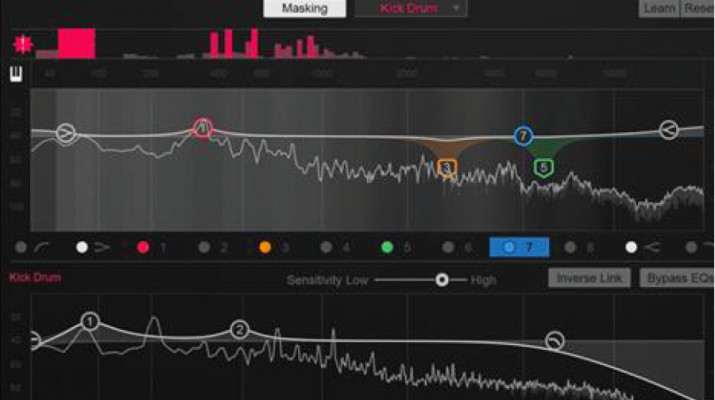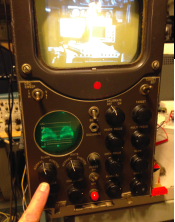By Steve McGrath
What is the last new thing a cell phone could do that truly amazed you? I haven’t been amazed by cell phones since I saw live video streaming from them. The pictures have gotten crisper and the video looks better and better over the years, but nothing new that a cell phone has done has amazed me. Of all the companies in the world, the one who may change this is RED. Yes, the RED, the innovative camera company.

RED has announced that they are going to offer a cell phone in early 2018. They are calling the phone the “Hydrogen“. It promises to be the “World’s First Holographic Media Machine.” It promises to be able to “seamlessly switch between traditional 2D content, holographic multi-view content, 3D content and interactive games.” But what does that mean?
It means that this RED claims that this Media Machine (née cell phone) can have holograms appear and then seamlessly switch back to a traditional 2D screen. It seems like it’s impossible, but according to RED, this is just months away.
Everyone who comes out with a cell phone tends to focus on a few features to make theirs stand out, but no one has shifted their total focus to be the optics and camera. And why wouldn’t the company that focuses on that, be an optics company.
The Hydrogen will run on the Android OS (Operating System). You will see your Android OS just fine on this phone’s massive 5.7 inch screen. But what will make it special is you will be able to view RED’s Hydrogen 4 View Content (also known as H4V). This is the what will generate the holograms. And in 3D’s “last stand” the device will also support 3D. The phone will also support virtual reality (VR), augmented reality (AR) and mixed reality (MR). But what does that mean? Does that mean that these mixed realities will be presented on the holograms? Only time will tell.

Visual optics aren’t the only thing that will be special about this media machine. The OS will also have a proprietary H3O algorithm that will take traditional audio and convert it to multi-dimensional audio. It will be like having 5.1 audio on a cell phone
When it comes to storage on the Hydrogen, the only announcements about hardware is that there is an internal memory card, a micro SD card slot, a headphone jack, a front facing camera, a rear facing camera, and a USB-C slot for charging and moving data. Other features include the ability to be a touch screen monitor for other RED cameras and it will support modular attachments. Last but not least, you can choose the cell phone carrier, so you aren’t locked into a proprietary deal.
It’s also rumored that the Hydrogen will be running with RED’s Helium sensor. It’s been said that that Hydrogen will have superior image quality for a mobile media device, but it won’t be cinema quality just yet.
It also can’t be ignored how secretive that RED is being about the phone. No one has seen a working demo of it in action. The only thing that has gone out to reviewers are an empty shell of the phone that will give you a tactical feel in your hands, but nothing more. People who have seen the holographic part have all signed NDA (Non-disclosure agreements) so no one is talking. Yet people are preordering the phone. If you head over to the RED User Forum, you will see pages of people on threads saying that they have pre-ordered the phone already. Why?
It is because as a company, RED is magical and they always seem to accomplish the impossible. People believe in RED. Every time I leave their booth at NAB, I have goosebumps. If there is a company that could put holograms in our hands like every sci-fi movie, it makes sense that it’s RED.
Hydrogen will release on two tiers. The Aluminum will release for $1195 and the Titanium will release for $1595. The back of Hydrogen is supposed to be a mix of metal and Kevlar. But the rest of the phone is going to be made of the metal that you order whether its aluminum or titanium.
RED says these media machines will release in Q1 of 2018. Will RED re-invent the cell phone? Time will tell.



 By Steve McGrath
By Steve McGrath Coming out of one of the most innovative places in the United States is one of the most innovative companies I have seen in recent memory. From Cambridge, Massachusetts, Izotope has created plugin-ins and tools that really ride the fine line of innovative and job threatening. Their plugins work so well, that audio engineers have to feel threatened by it, but are so easy to use that anyone can get going on them and improve their audio mixes.
Coming out of one of the most innovative places in the United States is one of the most innovative companies I have seen in recent memory. From Cambridge, Massachusetts, Izotope has created plugin-ins and tools that really ride the fine line of innovative and job threatening. Their plugins work so well, that audio engineers have to feel threatened by it, but are so easy to use that anyone can get going on them and improve their audio mixes. This will be the most exciting year for Boris at this year’s NAB. It is the first year that Boris will be at NAB after the colossal merger with Genarts. Both product lines will be a super-sized booth this year as a mecca of top-shelf visual effects. It could be the most visually stunning booth in
This will be the most exciting year for Boris at this year’s NAB. It is the first year that Boris will be at NAB after the colossal merger with Genarts. Both product lines will be a super-sized booth this year as a mecca of top-shelf visual effects. It could be the most visually stunning booth in
 This year they are exhibiting the latest in Television field acquisition equipment for 1952. If you are old enough to remember, that would be the RCA TK-31 (the field version of TK-11). According to Tom Sprague, Chief Engineer at National Boston, “We hope to have two of them making pictures, not great pictures, but pictures none the less. Prior to this time Television was live and immediate, leaving a permanent record only in the minds of the viewers. Sixty years ago that all changed!
This year they are exhibiting the latest in Television field acquisition equipment for 1952. If you are old enough to remember, that would be the RCA TK-31 (the field version of TK-11). According to Tom Sprague, Chief Engineer at National Boston, “We hope to have two of them making pictures, not great pictures, but pictures none the less. Prior to this time Television was live and immediate, leaving a permanent record only in the minds of the viewers. Sixty years ago that all changed!
